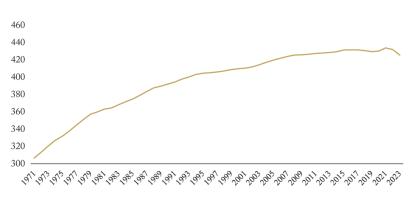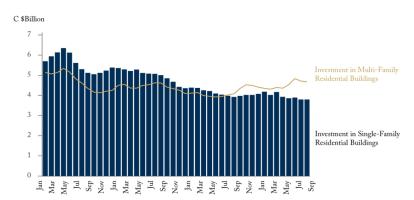A Marginal Effective Tax Rate (METR) measures the percentage increase in the rate of return an investor would need to cover the cost of taxes. The graphic below shows the sources of the METR on business investment, for the largest city in each province.
- Show Year:
Oops! If you are seeing this message, it may be because the chart is not displaying correctly. Try upgrading your browser or enabling Javascript.
C.D. Howe Institute | Source: Various Provincial and Municipal Budgets
In this edition of Graphic Intelligence, we show that business property taxes and land transfer taxes represent about two-thirds of the total tax burden on new investment in Canada’s major cities. We find that Saint John, Charlottetown, and Montreal have the highest total tax rates – i.e., combined federal, provincial and local rates; whereas Saskatoon and Calgary lead the pack with the most competitive overall business tax environments, Calgary, Saint John as well as Halifax are the only three cities in which we find higher taxes in 2015 than 2014, mainly because of higher provincial taxes.
Comparing tax burdens over jurisdictions is important for businesses and the governments that seek to attract them. Canadian governments should include business property taxes when they measure the tax burden on business investment.
For more information on the business tax burden in your jurisdiction, and to find out how we grade various jurisdictions based on business property tax simplicity and transparency, read Business Tax Burdens in Canada’s Major Cities: The 2015 Report Card.




